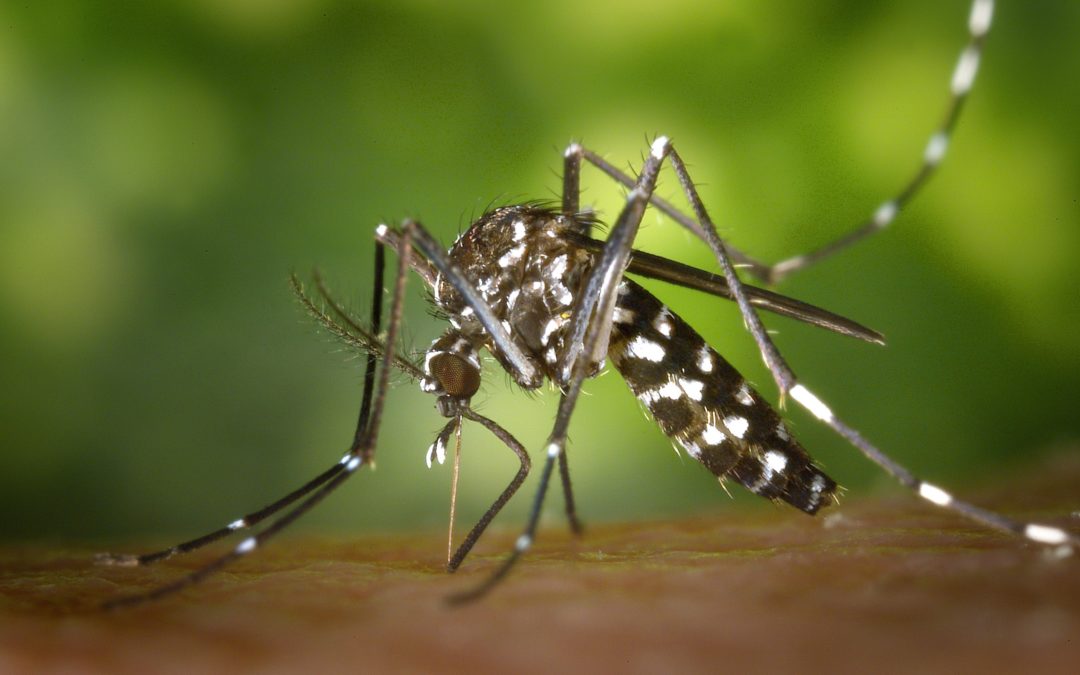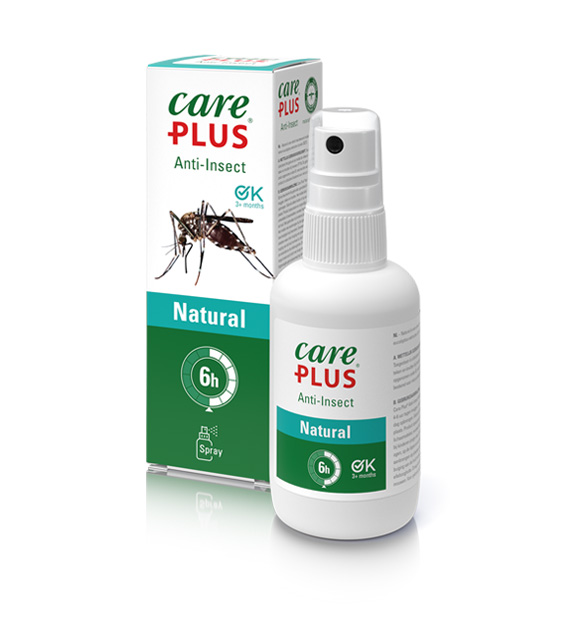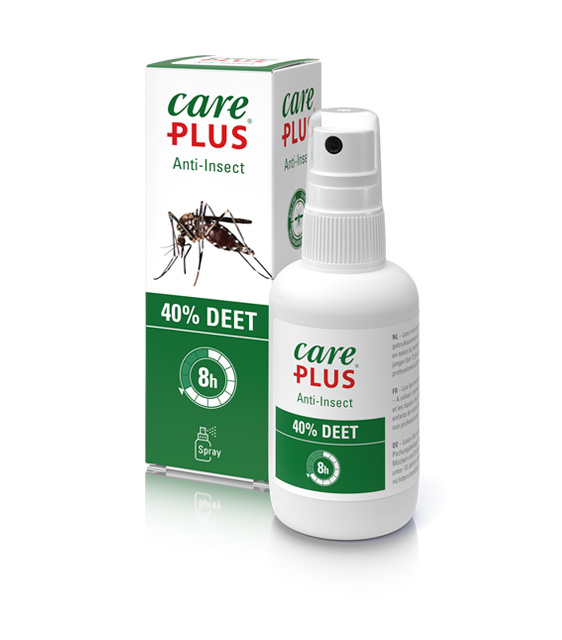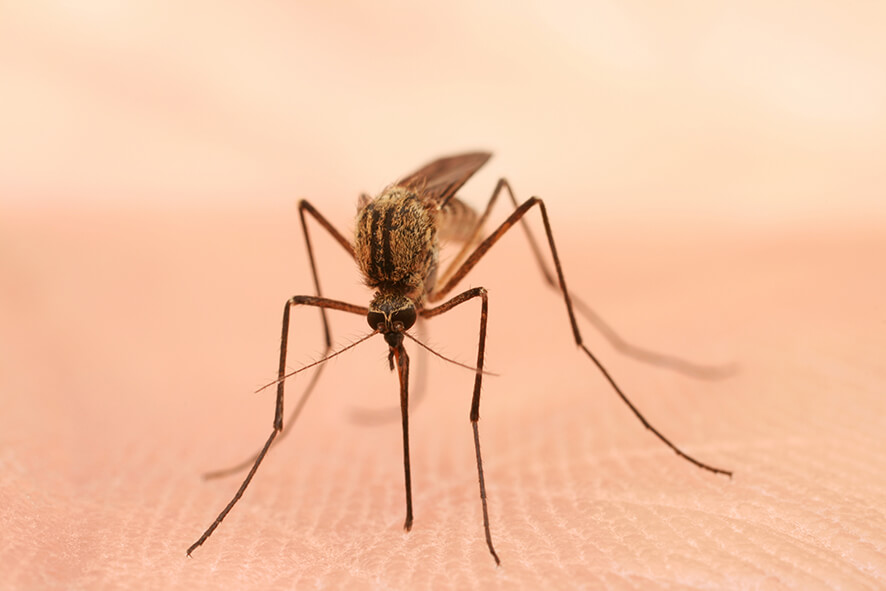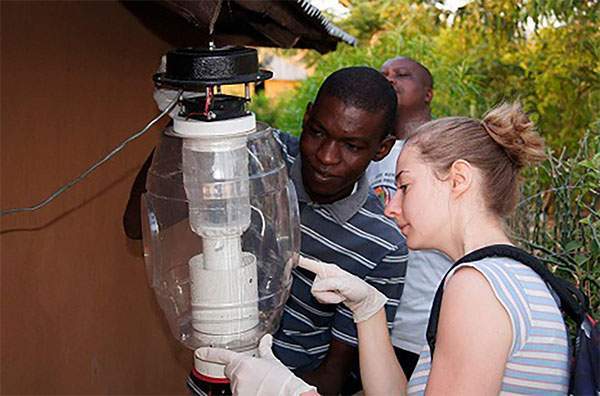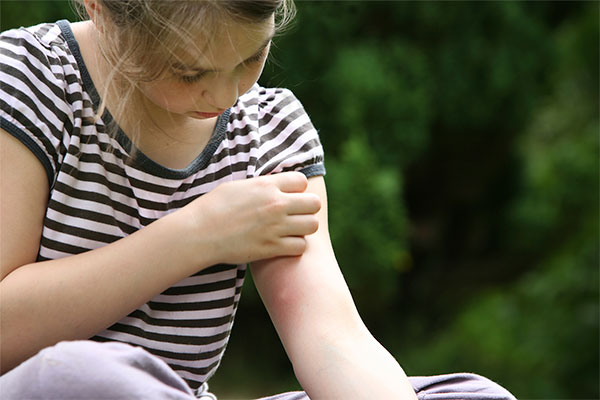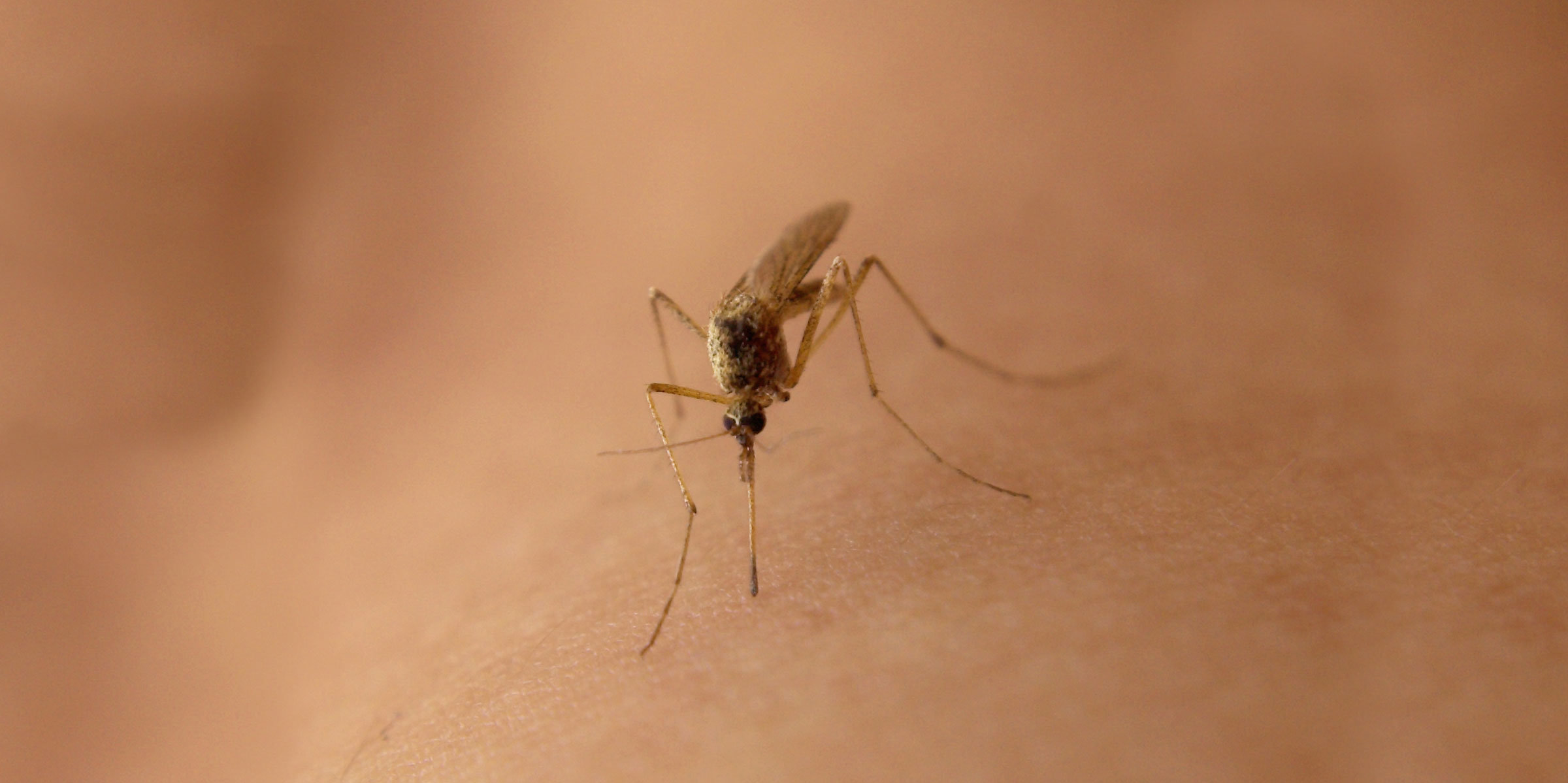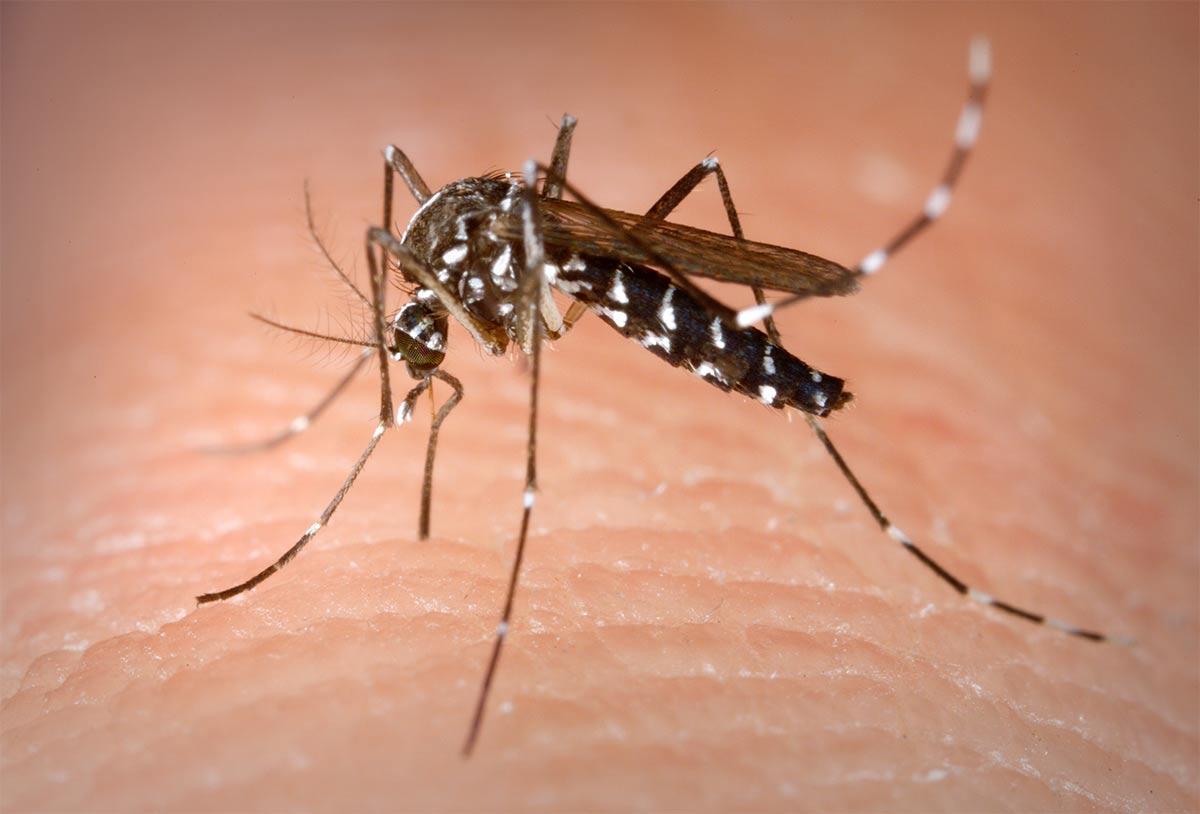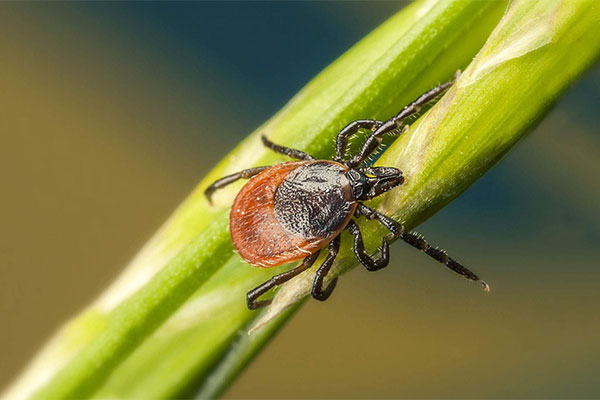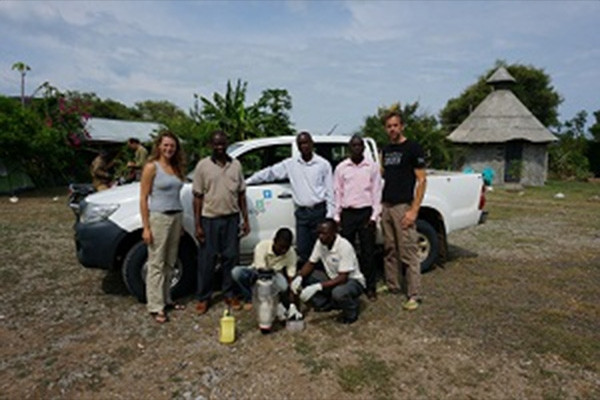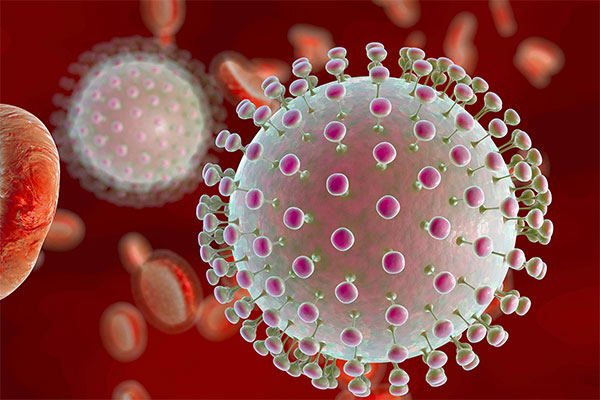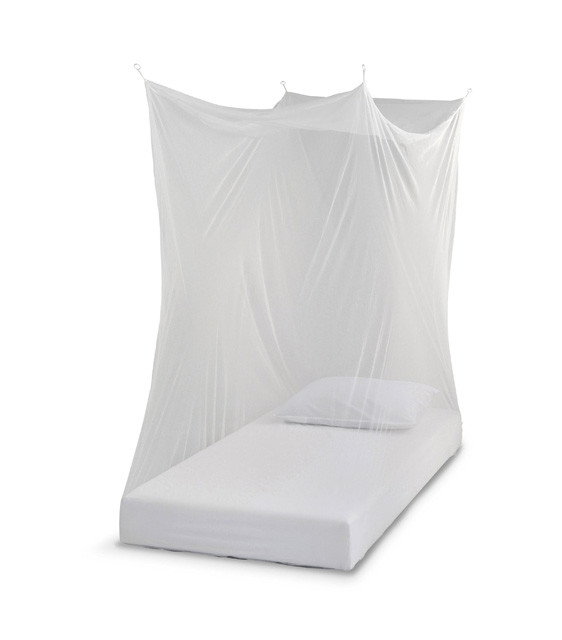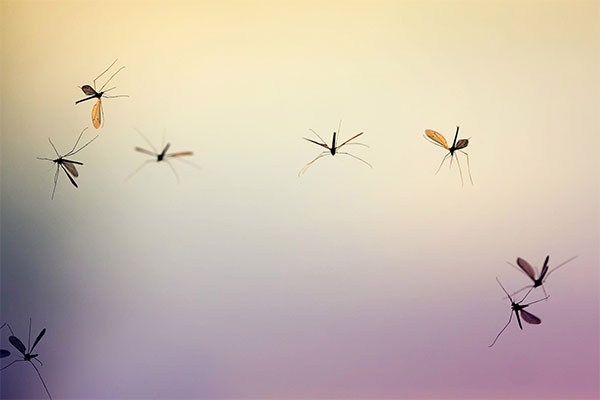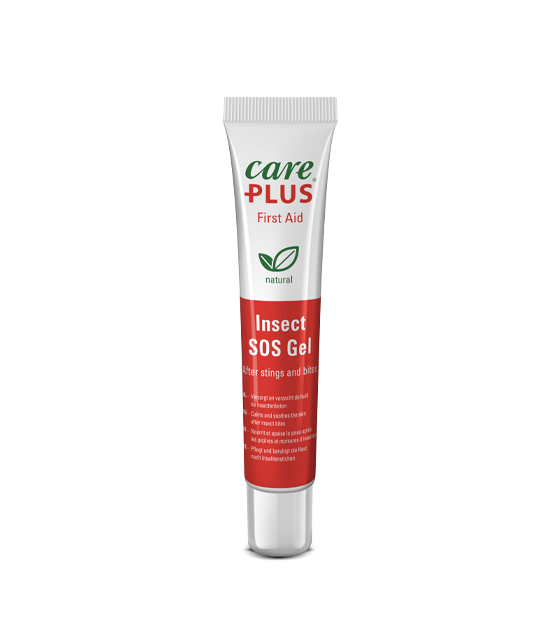Mosquitoes can transmit diseases
Stinging and biting insects are not only annoying but also dangerous in some cases. They can transmit infectious diseases or cause an allergic reaction. Care Plus® products reduce insect bites and nuisance. This reduces the risk of malaria ((sub) tropical destinations), zika (an advancing disease, especially dangerous for pregnant women), yellow fever (Tropical Africa, South America) and dengue fever. Or use mosquito-repelling products that are suitable for small children or in case of hypersensitivity to DEET.
Malaria
Malaria or swamp fever is an infectious disease caused by single-celled parasites of the genus Plasmodium belonging to the Sporozoa. The parasite is transmitted to humans by malaria mosquitoes.
The World Health Organisation estimates that between 500,000 and 1,000,000 people die of malaria each year, mostly in Africa of which the vast majority are children under the age of 5. Around 40% of the world’s population lives in areas where malaria occurs. 20% of infant mortality in Africa can be attributed to malaria.
Pregnant women are at high risk of dying due to malaria complications, but there is also a risk of miscarriage or premature birth. And there is the risk of anemia in women and, as a result, babies with too low a birth weight.
Dengue
Dengue, also known as dengue fever, is a tropical infectious disease caused by the dengue virus. The symptoms include fever, headache, muscle ache, and joint pain, and a characteristic rash similar to that of measles. In a small proportion of cases, the disease develops into the life-threatening dengue hemorrhagic fever with bleeding, low platelet count and blood plasma leakage, or to dengue shock syndrome, which involves dangerously low blood pressure.
Dengue is transmitted by different species of mosquitoes of the genus Aedes, mainly by the Aedes Aegypti (dengue mosquito). The virus has five different types; infection with one type usually gives lifelong immunity to that type, but only short-term immunity to others. Subsequent infection with a different type increases the risk of severe complications. Because there is no vaccine, prevention mainly means that the habitat of the mosquitoes is restricted, their number is reduced and with it, the chances of being bitten. Approval of the EMA for Dengvaxia (Sanofi) is expected in December 2018, but only for people who have already been infected with the dengue virus.
The treatment of acute dengue is supportive in nature. In light or medium cases, rehydration is provided by drinking or intravenously. In more serious cases, liquids are administered intravenously and through blood transfusion. The number of dengue cases has risen sharply since the 1960s to around 50-100 million infections per year. Early descriptions of the condition date from 1779, and its viral cause and transmission were discovered by the early 20th century. Dengue has become a global problem since the Second World War and is endemic in more than 110 countries. Apart from eliminating mosquitoes, work is ongoing on a vaccine, as well as medication targeted directly at the virus.
Zika
The zika virus is a flavivirus that causes the disease zika fever. The virus is mainly transmitted by female mosquitoes. Zika fever is generally a mild condition without any treatment. The disease often resolves itself. However, there are indications that infection with the virus can have serious consequences for human health, in particular for the fetus. As a result of the virus, the child may develop microcephaly, a skull size that is too small with major consequences for further development.
The virus has been known since 1947, when the zika virus was discovered on a rhesus monkey in Zika forest in Uganda. The virus owes its name to the forest in which it was discovered.
Five cases were detected in Germany between October 2015 and January 2016. As far as we know, these have been the first cases in Europe. On 4 February 2016, the virus was diagnosed in a pregnant woman in northeastern Spain who had previously been in Colombia.
On 6 May 2016, a baby was born in Spain from a woman infected with the Zika virus, who was showing birth defects (microcephaly). It was the first concrete case in Spain where a baby was born with such abnormalities that are most likely related to the virus.
Yellow fever
Yellow fever is an infectious disease caused by the yellow fever virus that is spread by mosquitoes. Up to 50% of those infected dies when the disease is not treated. The disease only occurs in sub-Saharan Africa (approx. 180,000 cases per year) and South or Central America (approx. 20,000 cases per year). An estimated 84,000 to 170,000 people are infected with the yellow fever virus every year, of which around 60,000 die. In Africa and South America, 900 million people are at risk of becoming infected with yellow fever. Vaccination is the most important preventive measure to combat the disease. The yellow fever vaccine is safe, affordable and very effective. The vaccine probably offers lifelong protection against yellow fever.
The yellow fever virus belongs to the flaviviruses but was previously incorrectly classified as togaviruses. The yellow fever virus is a single-stranded RNA virus that is 35-45 nm in size. Not all mosquitoes can transmit yellow fever viruses. In Africa, it usually concerns the Aedes aegypti or Aedes africanus, in South America, they are often mosquitoes of the genus Haemagogus. The virus enters the body through the salivary glands of the infected mosquito and infects lymphocytes. The virus then spreads to the rest of the body via the regional lymph node stations. Mosquitoes that sting an infected monkey or human become contagious after 2-3 weeks.
Every year, a few percents of the local population in an area with a lot of transmissions can become infected with the yellow fever virus. In young adults in those areas, antibodies to yellow fever can be found. In the UK, no cases of yellow fever have been reported. The yellow fever virus is found in tropical and subtropical areas of South America.
